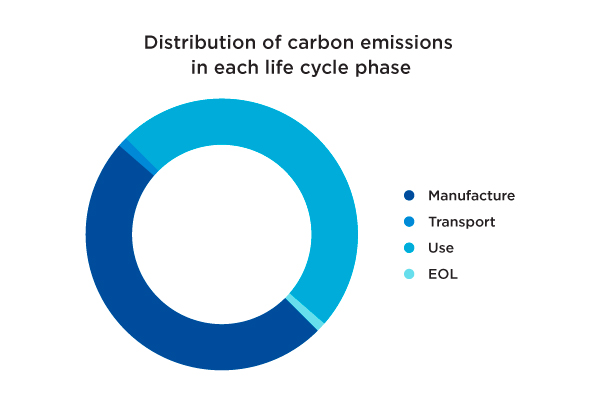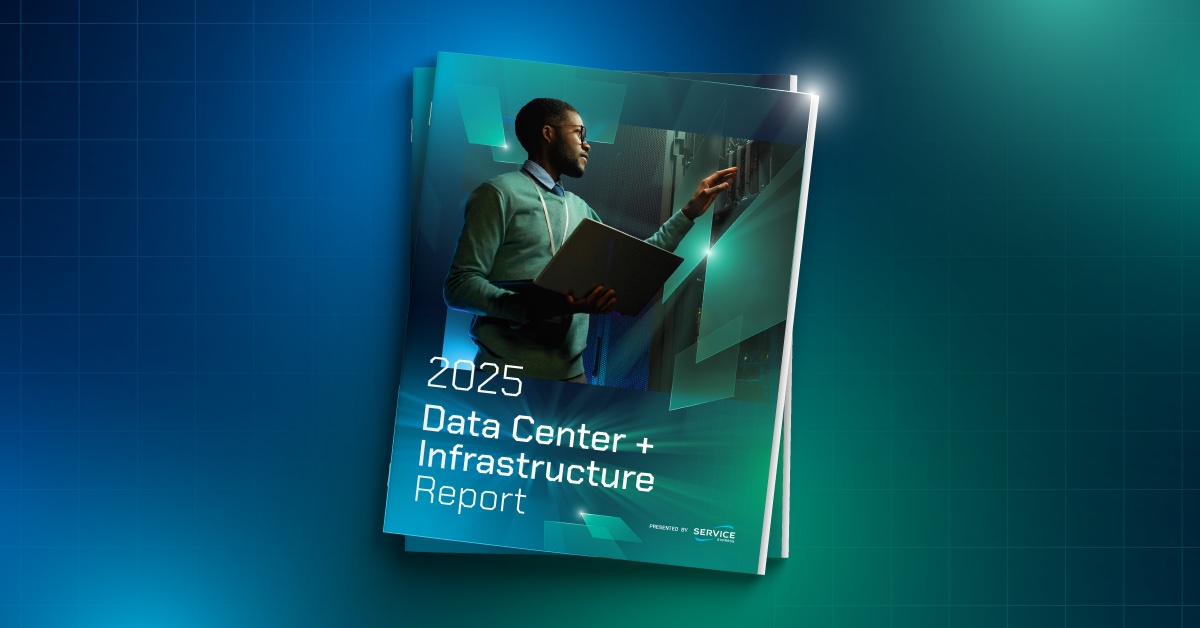As many countries continue to strive toward net neutrality in 2025 as outlined by The Paris Agreement, companies are occupied with evaluating their value chains, carbon outputs, use of finite resources and more.
When identifying areas to reduce carbon emissions, it’s common to focus on the automotive, manufacturing and transportation industries. However, looking at the IT and data centre industry is equally important. McKinsey forecasts that the demand for data centres in the United States will grow around 10% annually until 2030. A steady increase in the need for data centres means more equipment manufactured and transported, leading to increased carbon emissions.
Understanding the carbon impact of your data centre equipment can improve operations, strategies, processes and, ultimately, your sustainability goals.
- Corporate sustainability reporting
- What is a circular economy?
- What are carbon emission scopes?
- The environmental impact of data centre equipment
- How to address carbon avoidance in your data centre
- The next step on your data centre sustainability journey
Corporate sustainability reporting
The European Union’s Corporate Sustainability Reporting Direction (CSRD) took effect in January 2023. The directive requires companies to disclose detailed reports on Scope 1, 2 and 3 emissions as outlined by the 12 European Sustainability Reporting Standards (ESRS). Currently, the directive applies to companies operating in Europe and US-based companies with subsidiaries in Europe that meet specific criteria. Although sharing detailed information regarding carbon emissions and sustainability initiatives isn’t required across the board, it’s a step in the direction many countries are heading.
Now is the time for companies to understand their carbon footprint, sustainability goals and potential improvements to prepare for what’s to come. One of the many ways to do so is by adopting circular economy principles.
What is a circular economy?
Circular economy is the practice of slowing down the production and consumption of new materials by reusing, repairing and extending the life of existing materials. Decreasing the creation and consumption of new materials reduces waste, use of natural resources and greenhouse gas emissions (GHG).

In addition to adopting a circular strategy, understanding carbon emissions scopes and what falls into each category is equally important.
What are carbon emission scopes?
The Greenhouse Gas Protocol established scopes in 2001 to categorise the carbon emissions companies create in each area of their supply chain. GHG Protocol examines Scopes 1, 2 and 3.

Scope 1: Direct emissions
Scope 1 consists of direct emissions from a company’s activities and operations. Examples include company vehicles, facilities, etc.
Scope 2: Indirect emissions
(owned)
Scope 2 includes indirect emissions. A typical example includes purchasing energy or electricity to heat, cool and power facilities.
Scope 3: Indirect emissions
(not owned)
Scope 3 is one of the most challenging categories to measure because it includes indirect emissions created throughout the value chain. Examples include business travel, employee commuting, operational waste and more.
The environmental impact of data centre equipment
Understanding the impact of data centre equipment should include a holistic view of the manufacture, transport, use and end of life (EOL) phases. The image below illustrates the typical life cycle of data centre hardware from manufacturing to end of life.

Manufacture
The manufacture phase covers every step, from sourcing and mining materials to the product’s final assembly. Calculating specifics related to the manufacture phase is challenging due to the incredibly complex IT hardware value chain. One of the many factors contributing to the carbon output in this phase includes mining rare materials, such as lanthanum, cerium and europium, which are often located worldwide. In addition to mining rare metals, equipment requires specialised machines and facilities to assemble the entire system, including parts.
Transport
This phase includes distribution from the assembly site to the product’s final location.
Use
The longest life cycle phase represents the product’s operational life. This phase is measured by its electricity consumption and cooling. The use phase also includes the product’s installation, service and maintenance over time.
End of life (EOL)
This phase includes the disassembly, recycling with the help of IT Asset Disposition (ITAD) and other activities once hardware has reached the end of its useful life.
Carbon emissions created in each phase of the life cycle
The image below shows the estimated carbon emissions generated from each life cycle phase for various data centre hardware, including servers, traditional disks and SSDs.

You’ll notice the carbon emissions generated in the manufacture and use phases are comparable. Although this doesn’t provide a solid conclusion regarding the climate impact of data centre equipment, it shows the use phase isn’t the only contributor to the carbon footprint of hardware.
How to address carbon avoidance in your data centre
When it comes to your data centre equipment, there are two scenarios to consider when prioritising carbon avoidance.
Option #1: Refresh hardware
Hardware refreshes are costly and take considerable time to plan and implement. Often, purchasing new hardware comes with the benefit of decreased energy usage. However, manufacturing new hardware creates 60 tonnes of CO2e, not including the transport, use and EOL phases.
For example, following a refresh cycle every 3–5 years results in manufacturing new equipment at least four times over 12 years, creating a minimum of 240 CO2e.
Option #2: Extend life of existing hardware
Using the same example as option #1, completing a hardware refresh every 6–12 years results in manufacturing new equipment approximately twice over 12 years, generating a minimum of 120 CO2e.
It’s important to note that both scenarios generate carbon emissions, but the takeaway is the difference in CO2e generated with both options. Extending equipment life cycles postpones and decreases demand for the development of new hardware, in turn decreasing carbon emissions.
The next step on your data centre sustainability journey
Prioritising data centre sustainability and reducing carbon emissions is a multifaceted approach that involves addressing each area of the product life cycle. One of the most tangible and impactful strategies to address carbon reduction is leveraging circular economy strategies, extending hardware refresh cycles and gaining a holistic view of your data centre emissions.
Topics:




